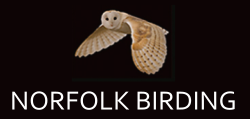ANDALUCIA AMAZING MIGRANTS TOUR REPORT 1st – 8th SEPTEMBER 2022
Participants:- David Bosworth, Alison Gordon, Dan Martin, Mandy Myers, Paul Norris, Richard & Jane Wicks
Tour Guide for Norfolk Birding – Chris Mills
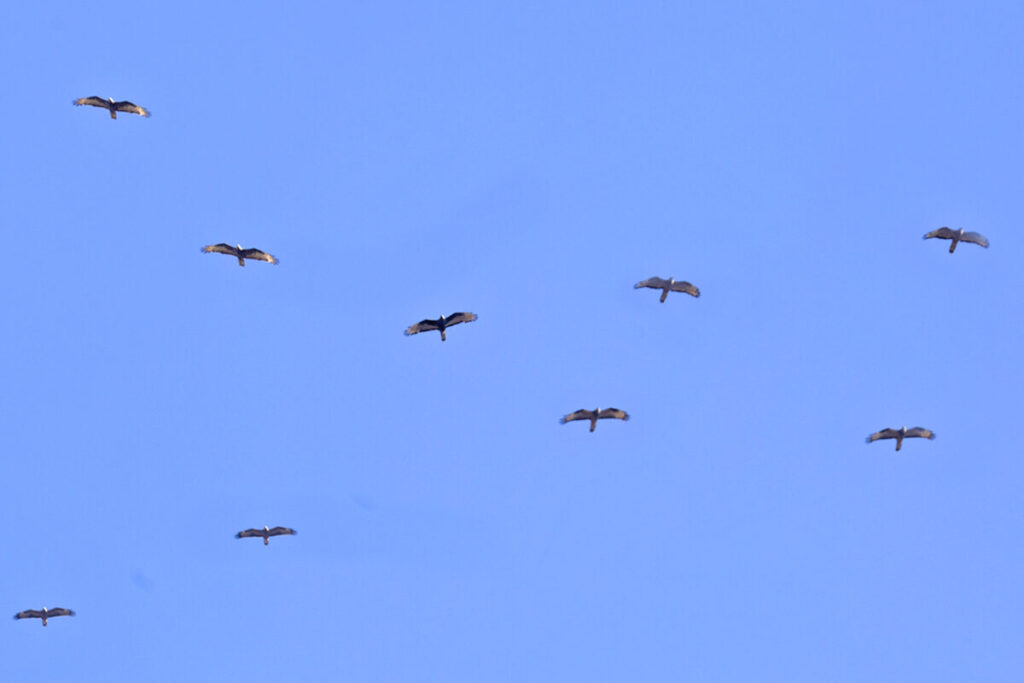
Overhead Honey Buzzard migration a regular feature throughout the tour
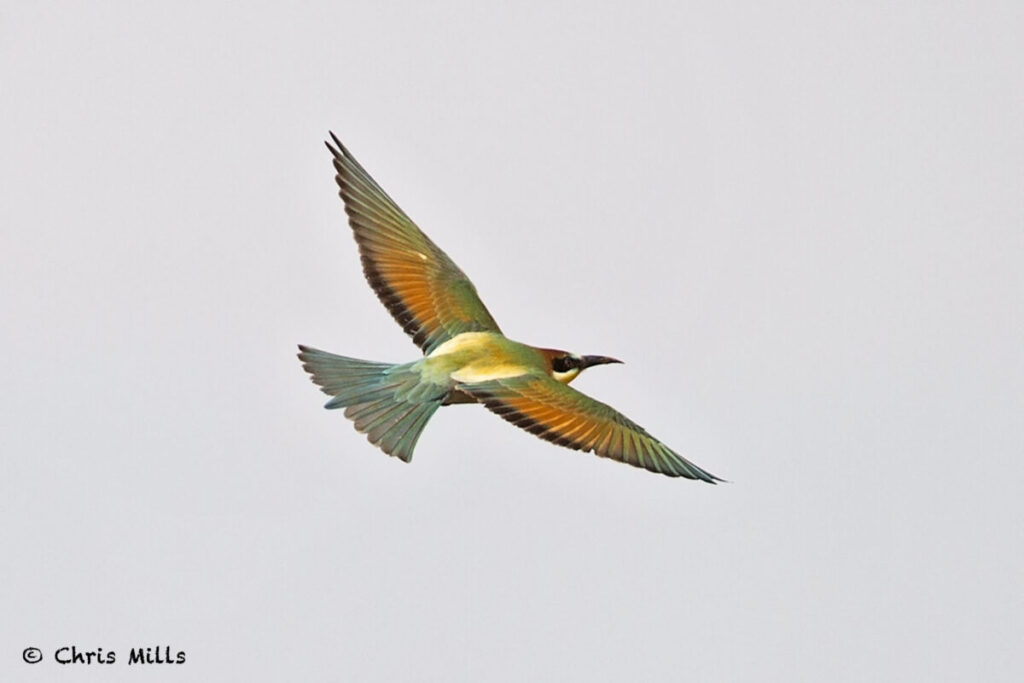
Bee-eaters passed by in their hundreds each day!
Day One – September 1st
I collected the group from the airport & we had barely left the urban area of La Linea before we stopped to watch 2-3 kettles of c200 Honey Buzzard & Black kites, moving East along the coastal ridge, welcome to the Straits of Gibraltar!
As we headed East we saw several occupied White Storks nests before we reached our accommodation at Huerta Grande.
Before we could unload another group of migrating raptors appeared above us, more Honey Buzzard and Black Kite, but also some Booted Eagles and Griffon Vultures!
We then spent a while getting everybody into rooms, before heading up to Algarrobo watchpoint. There was a nice if relatively high, continuation of raptor passage with still many more Honey Buzzards, Black Kites, Booted Eagles and small numbers of Short-toed Eagles. Also groups of Swifts were passing by, including some Pallid Swift, Swallows, House Martins plus a nice party of Bee-eaters all passed South overhead.
There were also a few Griffon Vultures circling high, plus an Osprey moved through heading quickly South.
We had a late lunch here then headed off to try Cazalla watchpoint, where it was a little quieter but still a similar mix of raptors passing and closer views of Black Kite, Short-toed & Booted Eagle. Plus at least 5 Marsh Harriers also moved through. We returned to Huerta Grande late afternoon and continued watching from the NW end of the site, with clear views to the East and across to Africa. This proved to be an inspired choice as wave after wave of Honey Buzzards and Black Kites appeared from the East and then headed out over the sea.
In amongst these kettles of raptors were Short-toed Eagles, Booted Eagles, 2-3 Marsh Harrier, a Juv Montagu’s Hr, 2-3 Egyptian Vultures, several Griffon Vultures and a real surprise was an adult Black Vulture circling high and followed the line out over the sea with the other migrating raptors.
The nearby bushes also gave us nice views of Crested Tit, an Iberian Chiff-chaff confirmed its identity when it called and a Sardinian Warbler entertained us by chasing and trying to feed on a grasshopper that refused to become prey!
Late on a small group of Bee-eaters also passed over, rounding off a great afternoon’s birding.
Day Two – September 2nd
We started today with a short walk around the accommodation, though the continuation of yesterday’s evening raptor passage soon had us back at the HG viewpoint.
There was a steady arrival of Honey Buzzards and Black Kites, from the East! At least c2000 Honey Buzzards heading out on a SW line across the sea already very high. We also had a couple of Egyptian Vulture, a few Booted and Short-toed Eagles as well as a few Bee-eater flocks. Later a good number of Swifts passed South with groups of Pallid Swift & Common Swift but also 1-2 Alpine Swifts as well.
The wooded areas around Huerta Grande gave us fine views of Firecrest, plus Crested Tit, flyover Hawfinches, also small numbers of Blackcaps.
We then headed to Los Lances beach as it was light winds & cloudy and undisturbed! The walk out was interrupted to watch a smart 1cy Peregrine perched on the pylon, plus Crested Larks flirting around below.
Then heading towards the shore, were the expected numerous Cattle Egrets and Corn Buntings. The bushes yielded a few migrants with a Pied Flycatcher, Reed Warbler & several Iberian Chiff-chaff. As we wandered to the pools, there were numerous Zitting Cisticola and Common Stonechats.
The pools held a good number of around 100 shorebirds, the bulk being Dunlin, Sanderling and Ringed Plover but in amongst these were at least 4 Curlew Sandpipers, 8 Red Knot and 5+ Kentish Plover.
There was a nice gull roost and amongst the numerous Yellow-legged gulls were at least 6 beautiful Audouin’s Gulls, also a single Lesser black-backed Gull.
We also connected offshore with 3 Cory’s Shearwaters close in along the beach. We then wandered along the boardwalk and were soon watching several Short-toed Lark, there were quite a few Iberian Yellow Wagtails flying over as well. As we wandered along we flushed a Hoopoe, always a crowd pleaser! Next we spied 2 Whimbrel in the longer vegetation as a flock of Bee-eaters passed overhead.
The real nice surprise came just as we started to walk back, as flash of colour flew up and caught my eyes. It was a European Roller, incredibly after standing watching for a few minutes we discovered there was two & just a while later it dawned on us there was 3 Rollers, as they moved closer together, a wonderful set to have found and enjoy!
We next headed up into one of the quieter valleys for a late lunch, whilst watching around 100 Bee-eaters entertaining us. Plus Short-toed and Booted Eagle overhead. We then headed along one of the quiet tracks, 3 Wheatears, 5-6 Tawny Pipit, cracking views of Alpine Swift at eye level, followed by a hunting Juv Montagu’s Harrier and lots of Common Stonechats!
We then headed to a high point at El Traffico, and looked over the sea, it was quiet for seabirds, but a lovely flock of 100 Bee-eaters sped past below us and at eye level affording very close views!
We headed back to the accommodation and did a short walk around and had 5 Spotted Flycatcher & a single Pied Flycatcher, plus 2 Hawfinch, Firecrest and several Blackcap. A few late in the day Honey Buzzard passed low overhead.
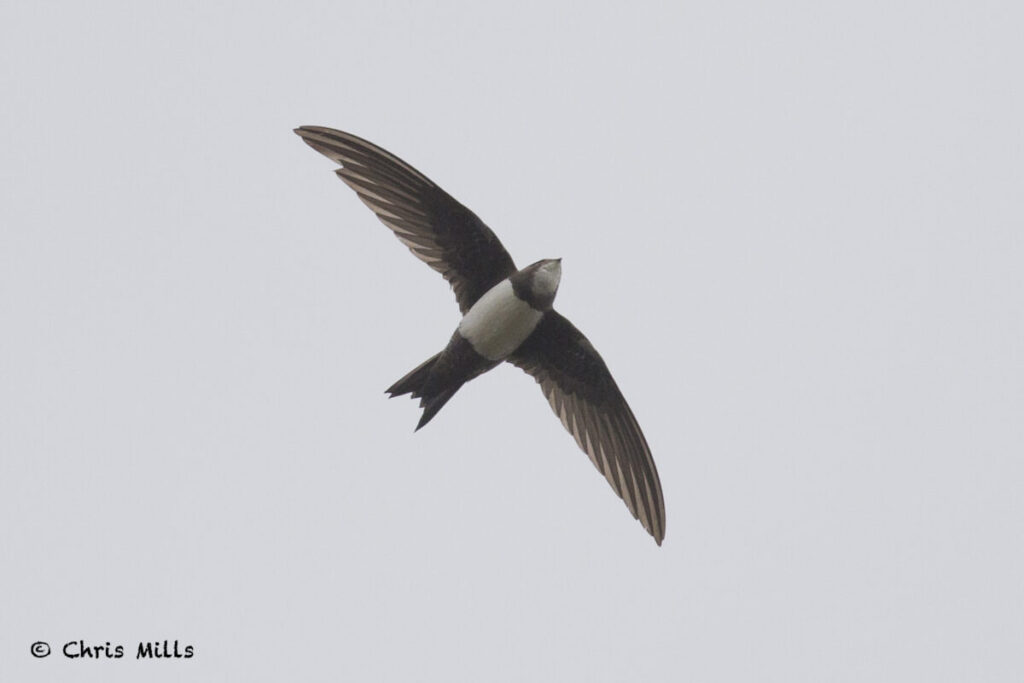
Alpine Swift some nice flocks passed by over the week
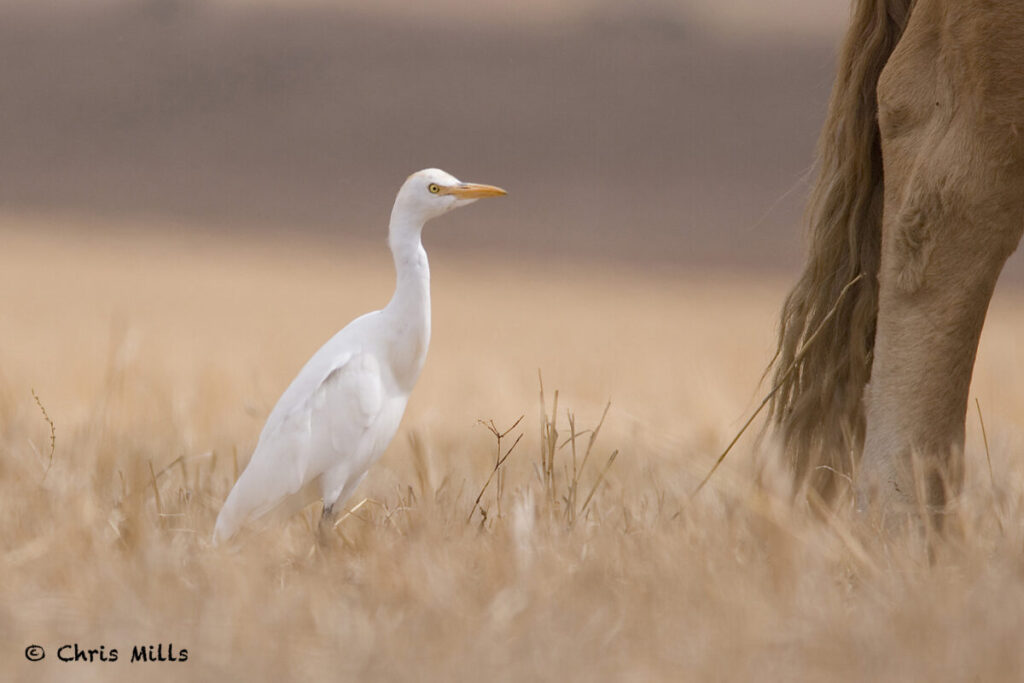
Cattle Egrets feeding around the cattle at Los Lances
Day Three – September 3rd
We started off again at Algarrobo with more raptor passage, there was again a good Honey Buzzard passage and thankfully as well as big kettles higher up, there was some nice lower birds, with both Booted and Black Kites also passing by at closer range this morning. Three Ospreys, a super ♂Montagu’s harrier & 5 Egyptian Vultures all passed South.
A circling flock of c30 Alpine Swift whizzed along the hillside and there also several flocks of mixed Pallid and Common Swifts also flashed by. Later in the morning a nice surprise was a Juv Bonelli’s Eagle, that came overhead mixed in with Black Kites and Honey Buzzards.
For anyone interested in the full day counts from the Algarrobo these were posted on Trektellen here https://www.trektellen.org/count/view/2485/20220903
We then headed to Barbate, where we were greeted with two smart Hoopoes walking around on the ground, this was followed up with a Collared Pratincole flying then landing up where we got excellent views. We then scanned from the shade and picked through the waders and gulls etc. Nice selection of Sanderling, Dunlin, Ringed Plover, Kentish Plover, Redshank, Avocet and also 5 Little Stints and 3 Common Sandpiper. There was several Audouin’s Gulls plus a backdrop of pink Greater Flamingo’s! There were several Iberian Yellow Wagtails though they were all flighty, and didn’t land in view.
We had lunch in the shady trees then drove further to view the other pools, here we located ten Stone Curlew, also two Spoonbills and two perched Ospreys. Two small groups of Glossy Ibis flew into the pools.
A couple of nice Juv Montagu’s Harriers were quartering the hillside and we got brief flight views of 25 Calandra Larks, which unfortunately disappeared back up into the vegetation on the hillside. We also had Grey Plover and 6 Black-tailed Godwit from here.
As we drove back we also added 2 Tawny Pipit and a Woodchat Shrike sat along the fence line.
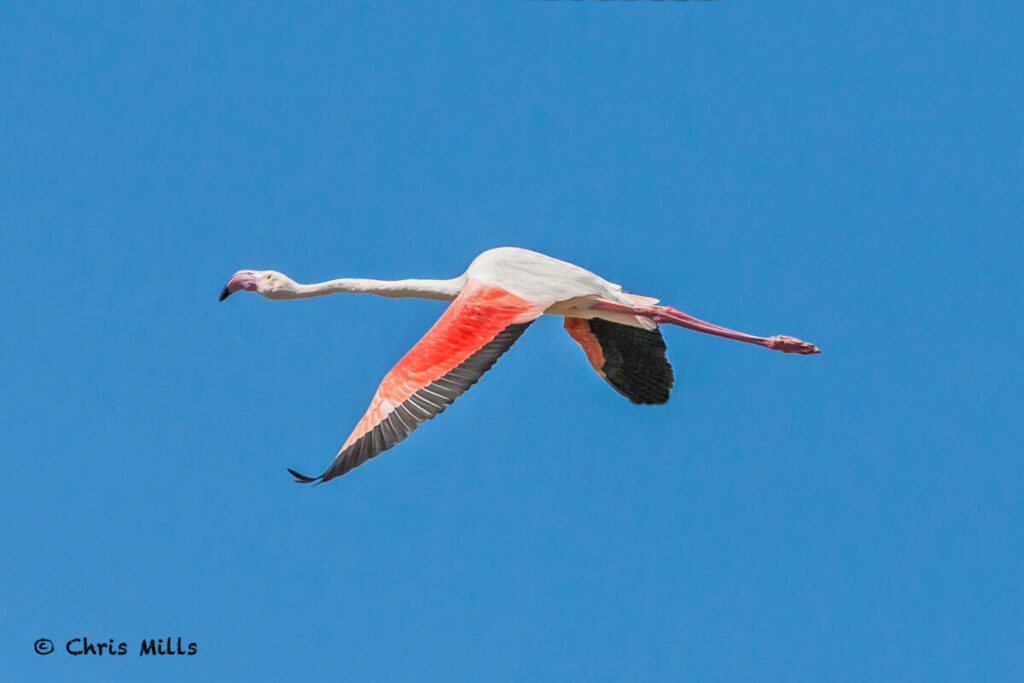
Greater Flamingo a real splash of colour in flight
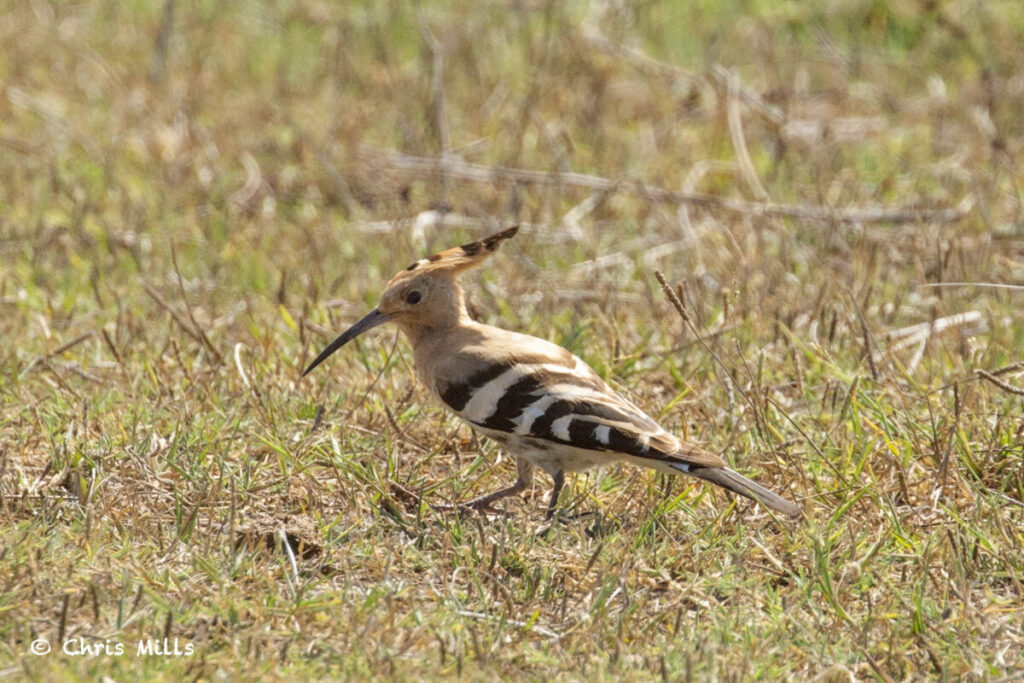
Hoopoe always a firm favourite, feeding on the ground at Barbate
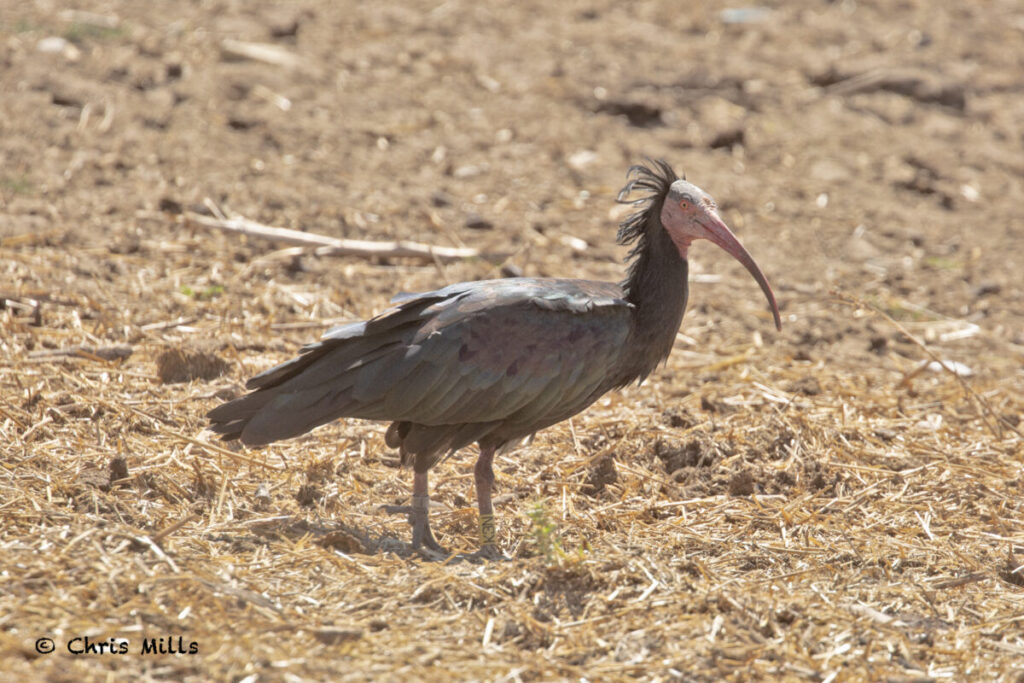
One of the group of Bald Ibis seen near Barbate
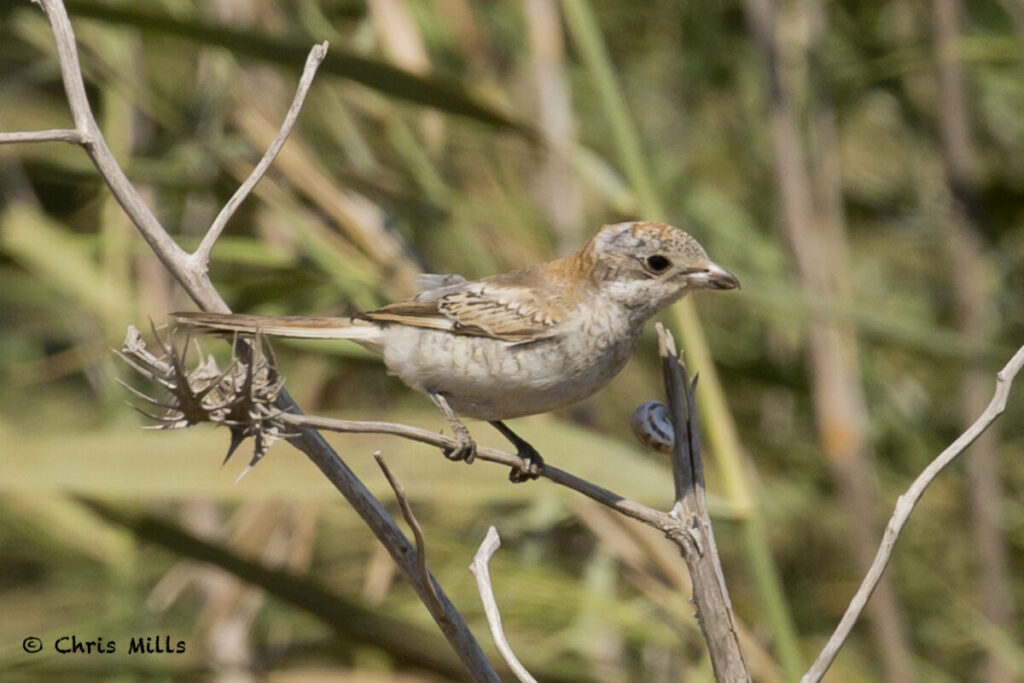
Juvenile Woodchat Shrike
Day Four – September 4th
We had a slightly earlier breakfast at 7.45am, to enable us to make the journey up into the mountains before the heat of the day arrived.
We eventually arrived in the first birding area, the temperature was rising rapidly so we had a quick hour with great success in the main parking area, exploring the trees, bushes and an nearby spring fed water trough. There was several Redstarts, a Pied Flycatcher in this area for starters, and the distinctive calls soon had us looking at an Iberian Grey Shrike on top of the bushes, it sat in view allowing great scope views. As we wandered along, birds kept popping into view, migrants also with 2 Whinchat, and a Tree Pipit were great but totally outdone by a superb male Black-eared Wheatear, a stunning mix of black, white and apricot! Next a party of 7 Woodlarks flushed from the ground.
As we walked through the shrubs, there were 1-2 Redstarts, several Sardinian Warbler, a Spotted Flycatcher & then a female Subalpine Warbler appeared giving reasonable intermittent views.
Another Sylvia warbler was calling nearby, it eventually gave itself up a smart male Dartford Warbler, showed very well.
It was already getting quite hot so we drove through the forest heading for another open area. We reached my chosen rocky valley and a more open area, parked up and started to explore. There were Crag Martin hunting insects along the ridge. The shrubs above held Greenfinch, Goldfinch and another Pied Flycatcher. A short walk on and we had nice views of a couple of Black Redstart and a male Cirl Bunting showed well. Eventually the first of several Black Wheatears appeared, the first a little distant by then with a male singing appeared just above us giving fine views, with at least three others eventually joining, a presumed family party! Watch a short video of this Black Wheatear here – https://youtu.be/KtVis0GrN60
There was several Rock Bunting calling, and eventually after a bit of effort 2-3 in view. Overhead there was several Griffon Vultures but raptors were relatively quiet.
It was now 1pm so we headed back to the parking area and we enjoyed lunch in the shade and sat down to watch the drinking trough area. Sat quietly it was a joy to watch the birds appear Iberian Chiff-chaffs, Willow Warbler, Chaffinch’s, Blue Tits and Great Tits all joined in and everything scattered when a Jay appeared, the slightly darker Iberian form, compared to the UK. The nearby trees also held several Iberian Chiff-chaff and a Pied Flycatcher.
It was early afternoon and it had been a very successful day, so we headed back out of the Sierra de la Nieves. I took the scenic route down via Gaucin to Casares. We stopped off at the lovely viewpoint at Casares and from here and watched a nice group of Griffon Vultures plus 2 Egyptian Vultures and above them there was a steady line of c300 migrant Honey Buzzards, purposely heading South, also migrant Booted and Short-toed Eagles mixed in as well. A Peregrine was also seen high above the rock face behind us.
Day Five – 5th September 2022
Today was a bright and early start with a packed breakfast at 6am, departing North at 6.30am bound for Bonanza Salinas.
We stopped off briefly to look for Rufous Bushchat, but nothing was doing, though a nice Melodious Warbler did appear nearby sitting up nicely on the low vegetation and providing good if brief views! We were soon entering the Salinas at the north end.
We soon came across an area that was nicely flooded with shallow pools and there was a score of wading birds and a lots of Little Egret, Spoonbills and the first of many groups of Greater Flamingo. Over the next couple of hours we adopted the strategy of stopping, scanning pools then finding another pool. We had a great list of birds with regular waders such as Curlew, Whimbrel, Black-winged Stilts, Kentish Plover, Ruff, Little Ringed Plover, Great Ringed Plover, Grey Plover, Greenshank, Redshank, Avocet, Dunlin, Sanderling, Common and Green Sandpiper all being seen in varying numbers. Amongst these we also noted several Little Stint and quite a few Curlew Sandpiper.
Plus nice to see our first and Slender-billed Gulls and Caspian Terns with several sitting and others flying up and down. In amongst all these birds were also 3 roosting migrant Black Storks, whilst overhead at least three different Ospreys were seen, with one hovering and fishing.
We next headed through the woodland to a freshwater pool, as we approached we had a small flock of Common Waxbills, plus several Red Avadavat! The pool side vegetation also harboured a Cetti’s Warbler. Out on the pool, there was some wildfowl, including commoner species such as Little Grebe, Mallard and Shoveler, but also small numbers of the more sought after White-headed Duck and a Tufted Duck. We then headed out to the salt-pan areas, eventually we found several lagoons with good numbers of waders.
It was nearing lunchtime and not too ho. t with a nice breeze, so we set out the coding chairs and had our picnic lunches, surrounded by nice mixed flocks
of Dunlin, Great Ringed Plover and Kentish Plover that also
included several Little Stint and Curlew Sandpiper. Plus smaller number
of Avocet, Greenshank, Common Redshank. There were also good numbers of gulls, with great views of many Slender-billed Gulls, accompanying Yellow- legged and Black-head Gulls.
We then headed to the last viewing area at the easterly point of the salt pans, there were 2 Osprey fishing, lots more Greater Flamingo’s, numerous Egrets including a Great White Egret. A nice flock of Black-tailed Godwits, plus 1-2 Red Knot. A species that had eluded us earlier in the day also appeared, several Lesser Short- toed Lark were seen with a single bird sitting out in the open and providing nice views.
The afternoon had flown by with such absorbing birding, time was pressing on! We now headed to 3 very organic and unlikely pools in amongst the intensive fruit growing areas nearby, each time we visit these pools it is amazing the birds they are holding. There were more Little Ringed Plovers in one flock than I have ever seen with around c30 Little Ringed Plovers, also closer views of White-headed Duck,
3 Temminck’s Stint and Little Stint, also roosting Black-crowned Night Herons, Purple Swamphens, Crested Coot in with Common Coot and Moorhen.
We just had time now to look for Little Swifts, so we headed over to Chipiona where fortunately on arrival before even eating the minibus we were treated to real close views of a Little Swift as it flew into the colony, we waited another 20 minutes and we had several more, one lingering allowing great views. We had a good clear journey back to Huerta Grande managing to arrive back by 6.30pm after a very full day out!
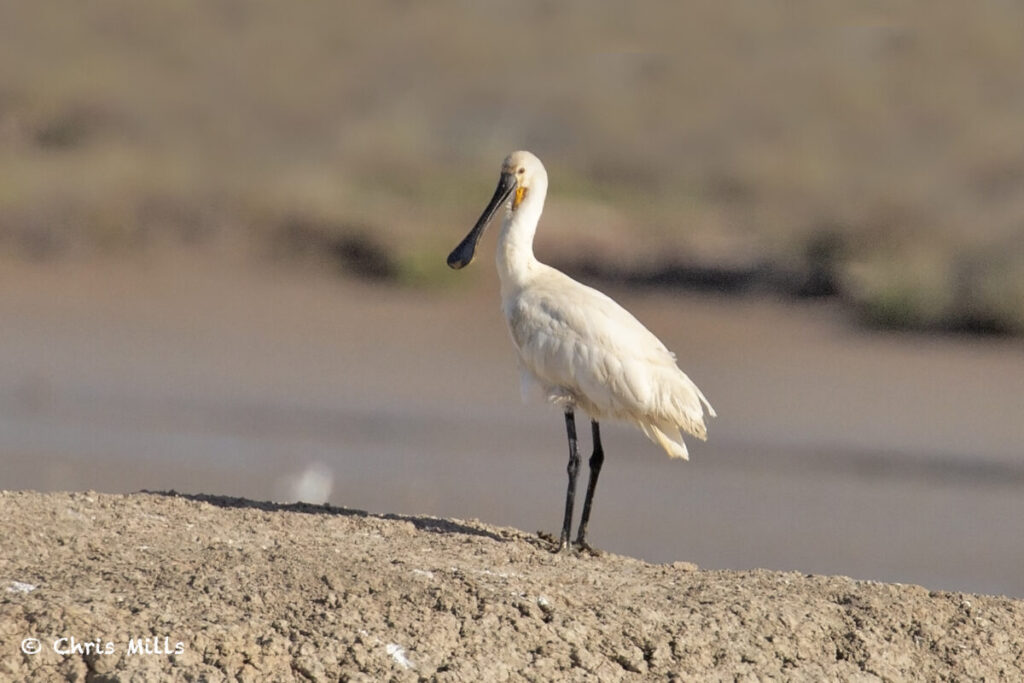
Eurasian Spoonbill at Bonanza Salinas
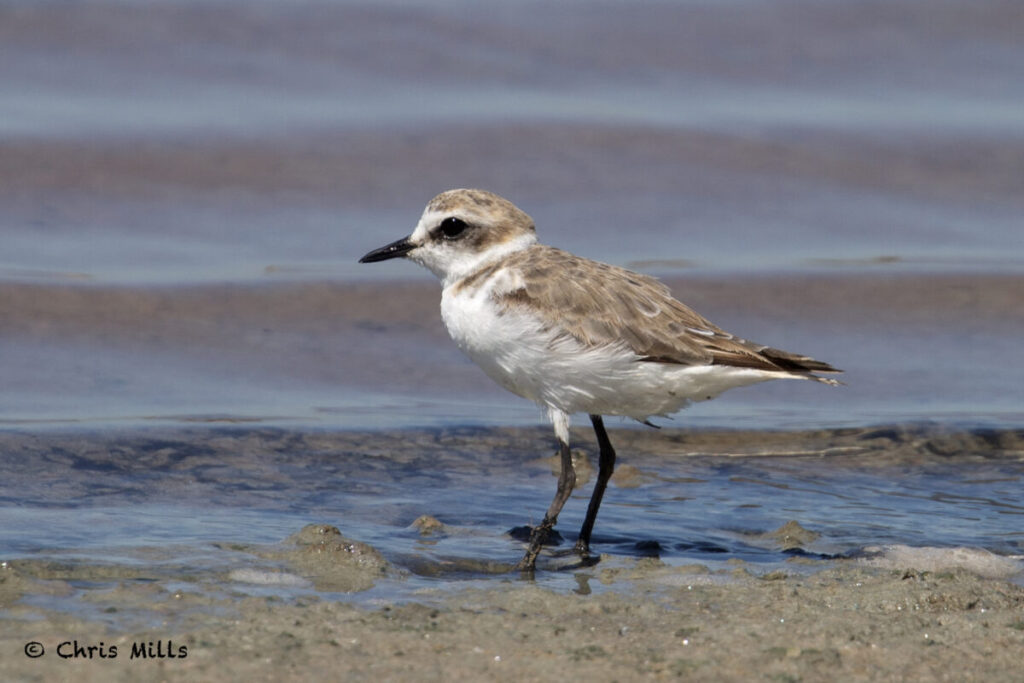
Kentish Plover at Bonanza Salinas
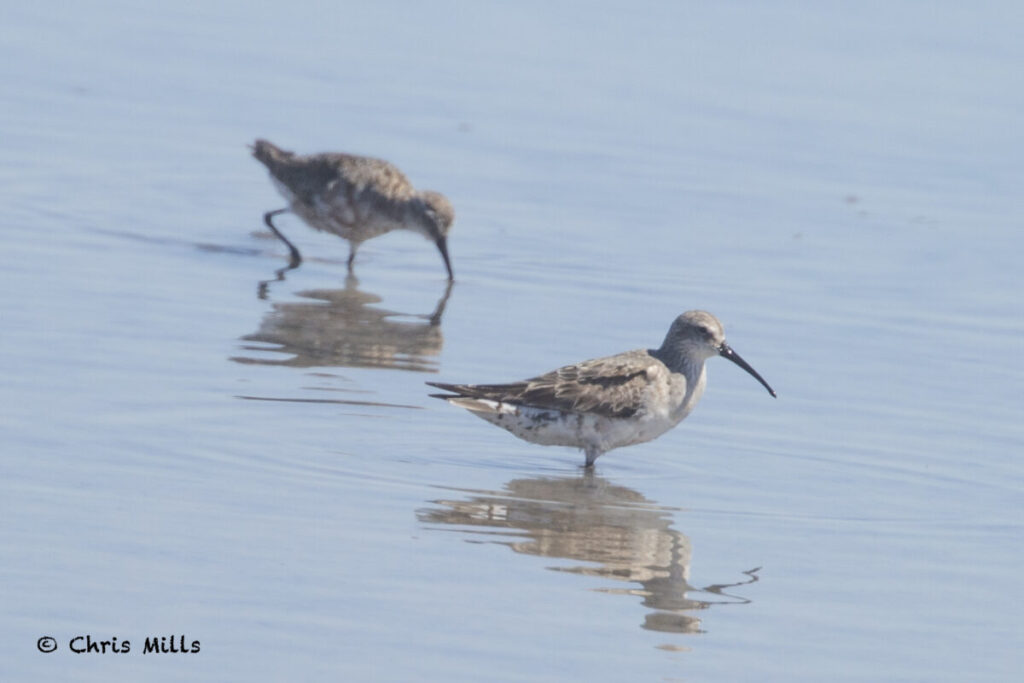
Curlew Sandpipers at Bonanza Salinas
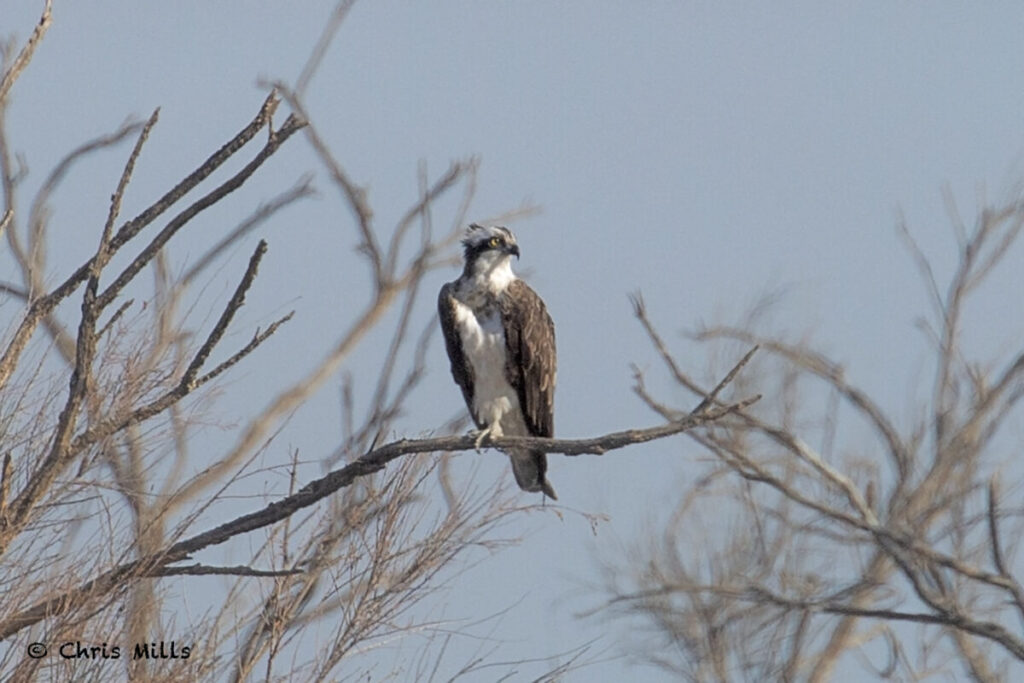
Osprey at Bonanza Salinas
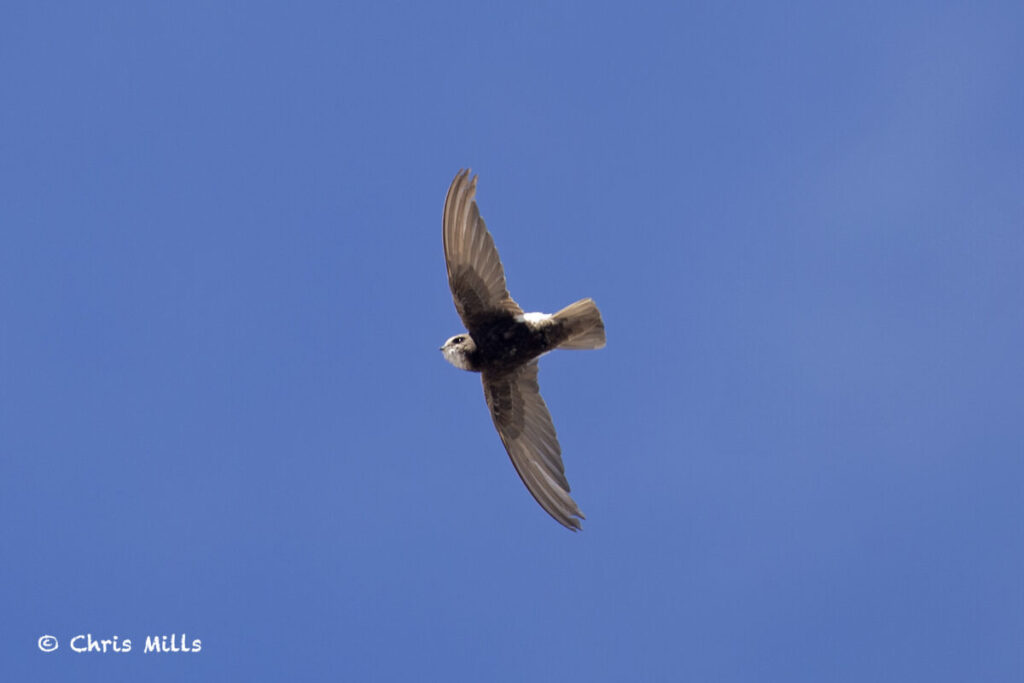
Little Swift near Chipiona
Day Six – 6th September 2022
We started the day by visiting the West side of Palmones Harbour, the tide was just rising and there was a nice selection of shorebirds, including a few additions.
On the near shoreline 2-3 Whimbrel were posing very nicely and calling in flight as they got disturbed from the shore edge. On the far side there as a good selection, with Oystercatcher, Grey Plover, Bar-tailed Godwit being species we had missed at Bonanza. There was a good number of Ringed Plover, quite a few Dunlin, Sanderling, many Redshank plus a single Greenshank, and an adult Curlew Sandpiper amongst them. A Kingfisher called and flashed along the shoreline and a group of a dozen Grey Herons were out feeding in the channels. An Osprey hovered in the distance but didn’t quite plunge into fish!
The tide was nearly in and we decided to head around to the West side, and look over the marsh and estuary from another higher vantage point. As we headed through the parkland a Pied Flycatcher flitted in and out of view, a migrant for sure.
Once up on the raised viewing platform, we could see right across the marsh, from this side, there was several Black-winged Stilt, Curlew, Whimbrel, Redshank, 2 Common Sandpipers, and now 4 Greenshank plus 3 Sandwich Terns flew past.
It was now late morning and the earlier cloud was lifting, we had now started to notice raptors moving along the coastal ridges, Honey Buzzards, Black Kites and Booted Eagles, so it was time to head up to the Algarobbo watchpoint.
Once up at the watchpoint there was a nice steady passage of raptors, with some Honey Buzzards, Black Kites, Booted eagles, Egyptian Vultures all coming past at lower heights than previous days, giving much better views.
There was also some nice flocks of Bee-eaters and also some lovely mixed flocks of Swifts, with some nice views of Alpine and Pallid Swift the latter the most numerous amongst the flocks moving through, 1-2 Yellow Wagtails called and passed overhead.
As we were staying out into the evening, we now headed into Tarifa to join Miguel for a relaxing Tapas lunch, this was a superb mixture of authentic Spanish dishes and everyone thoroughly enjoyed the food and an hour off.
After lunch we headed for Bolonia and spent an hour at the Vulture colony, there was good numbers of Griffon Vultures with breeding pairs with juveniles up on the ridge, despite an hours scanning we couldn’t find the sought after Ruppell’s. But there was a migrant Marsh Harrier, Crag Martins and the Vutures to keep us entertained.
It was a really hot day, so we stopped off for ice creams and cold drinks on the way to La Janda a quick stop en-route gave us a Turtle Dove perched up on telegraph wires, followed shortly afterwards by a juvenile Woodchat Shrike. Entering from the South side, we were soon watching several migrant Northern Wheatears, then a Hoopoe. We soon reached some rice fields and from here we had fine views of 3 juvenile Montagu’s Harriers, these were only surpassed when a dark morph Monty’s performed admirably in from of us. Also here 2 Marsh Harriers, lots of Little & Cattle Egrets, a flock of Glossy Ibis and quite a large but distant flock of White Storks swirling in the skies. A distant ringtail Hen Harrier was also watched hunting.
As the sun dropped we set up near the canal bridge and initially I located an extremely distant and rather unsatisfactory views of a Black-winged Kite, of course as soon as
we had driven a long way down the track to view it another Black-winged Kite appeared close by giving lovely views as it hovered hunting over the track.
The final birds of the day proved to be an amazing experience as the sun dropped from viewing dusk arrived. In the half-light a Nightjar appeared, flying past us, was it Red-necked or European!?
Several more Nightjars appeared with eventually, one landing on the track, Miguel quickly dropped a beam on to it and it sat perfectly as we approached and got some nice pics, this bird was indeed a Red-necked Nightjar. It allowed us very close approach in the headlights giving stunning views!
The day was rounded off and celebrated over a late couple of bottles of wine back at the accommodation!
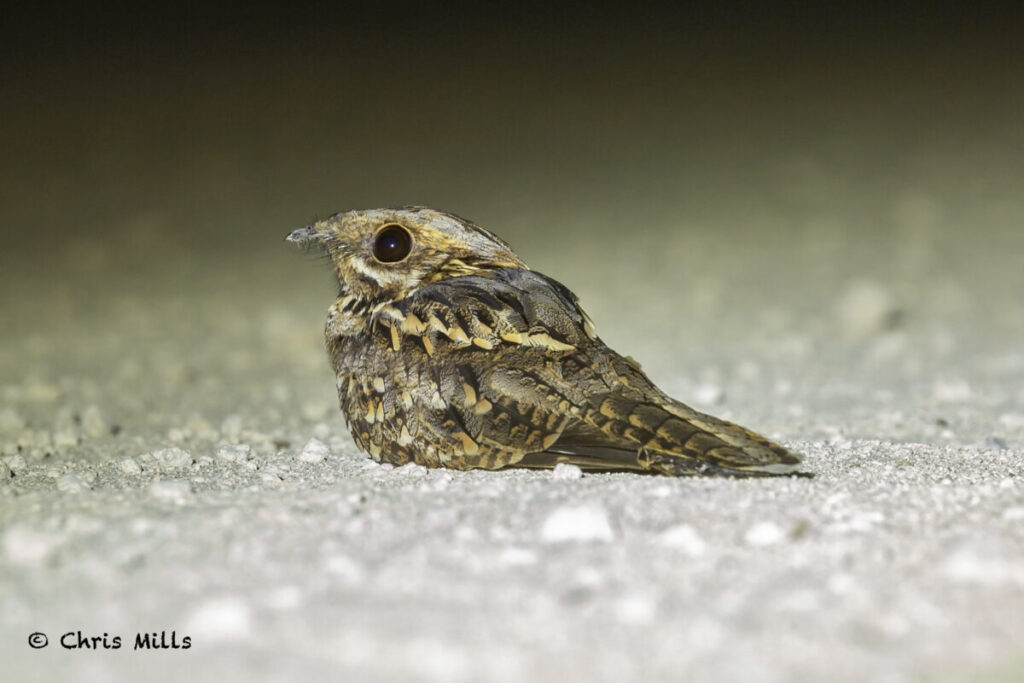
Stunning views of this Red-necked Nightjar just after dusk today!
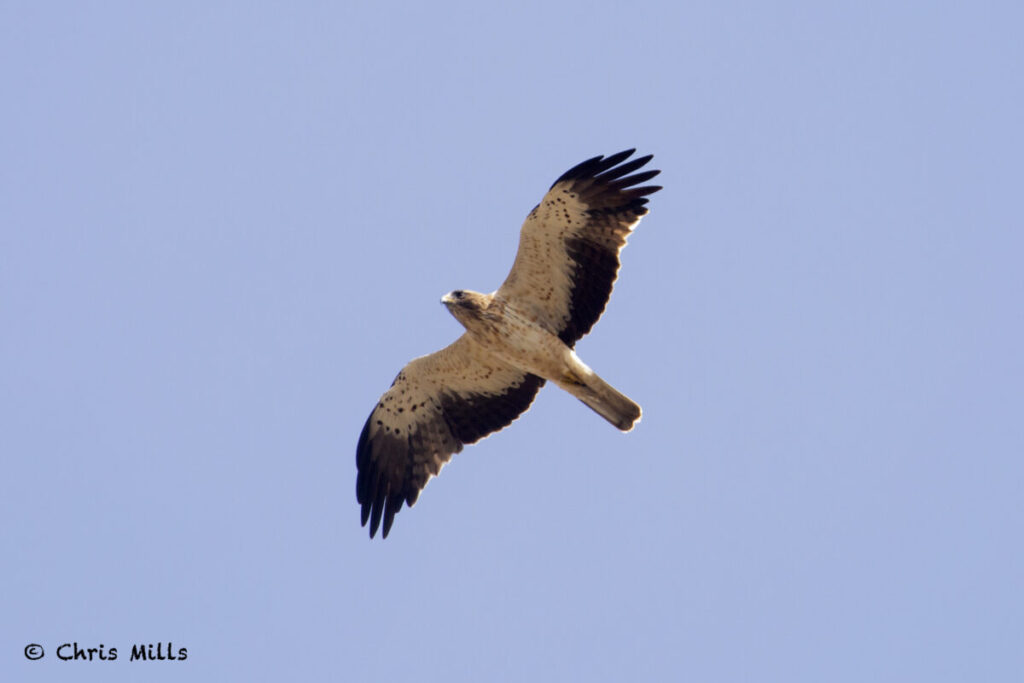
Better views of lower raptors today! Booted Eagle passes over us.
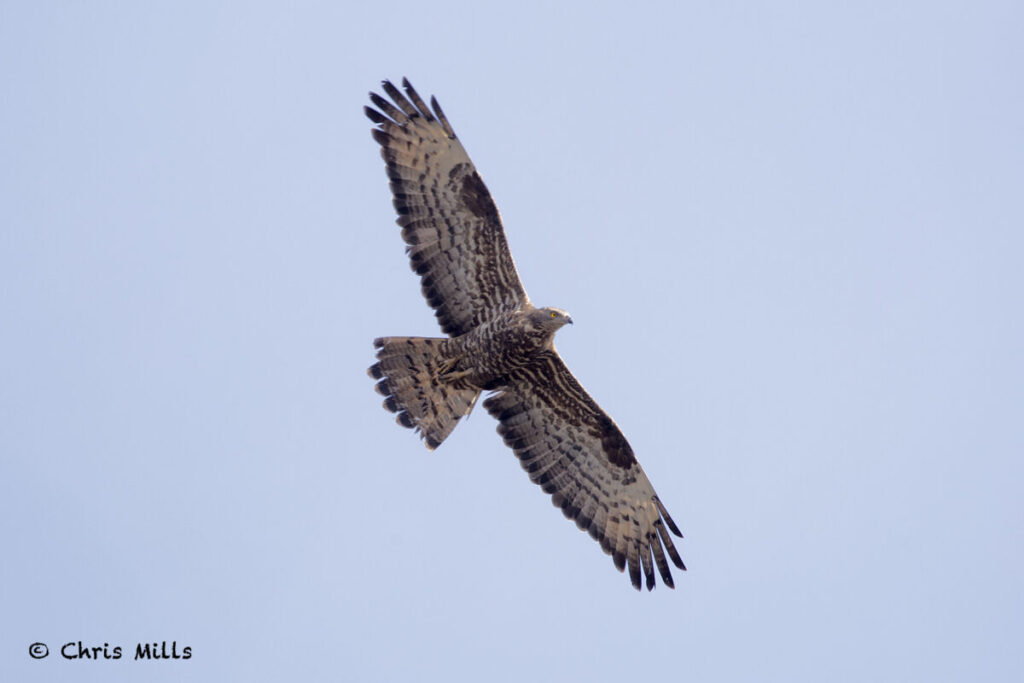
Better views of lower raptors today! A stunningly marked male Honey Buzzard.
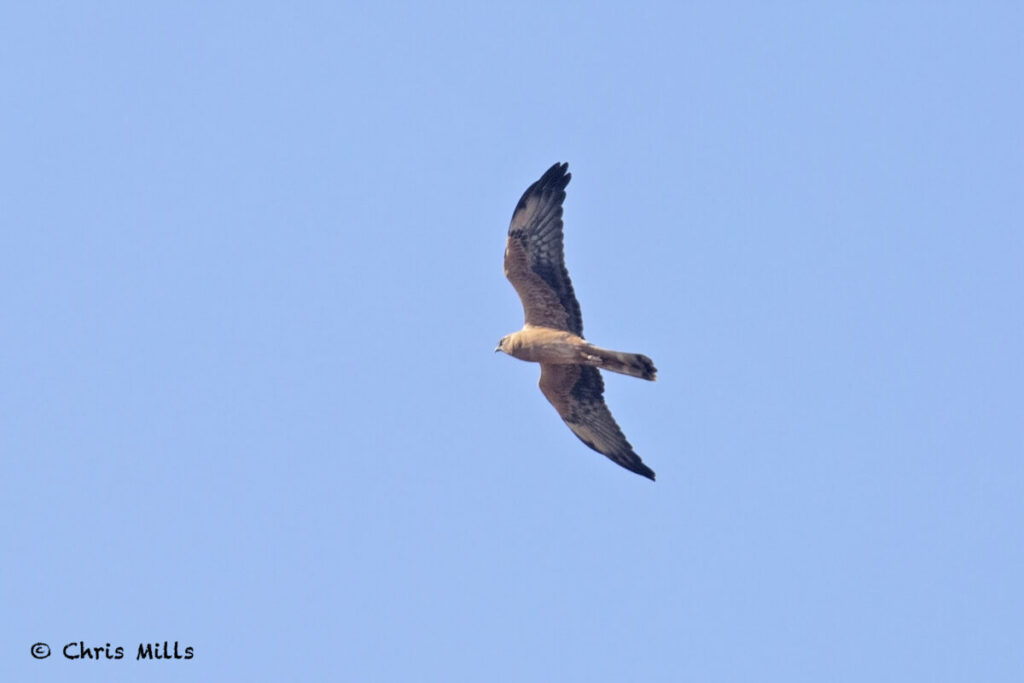
A beautifully marked juvenile Montagu’s Harrier at La Janda
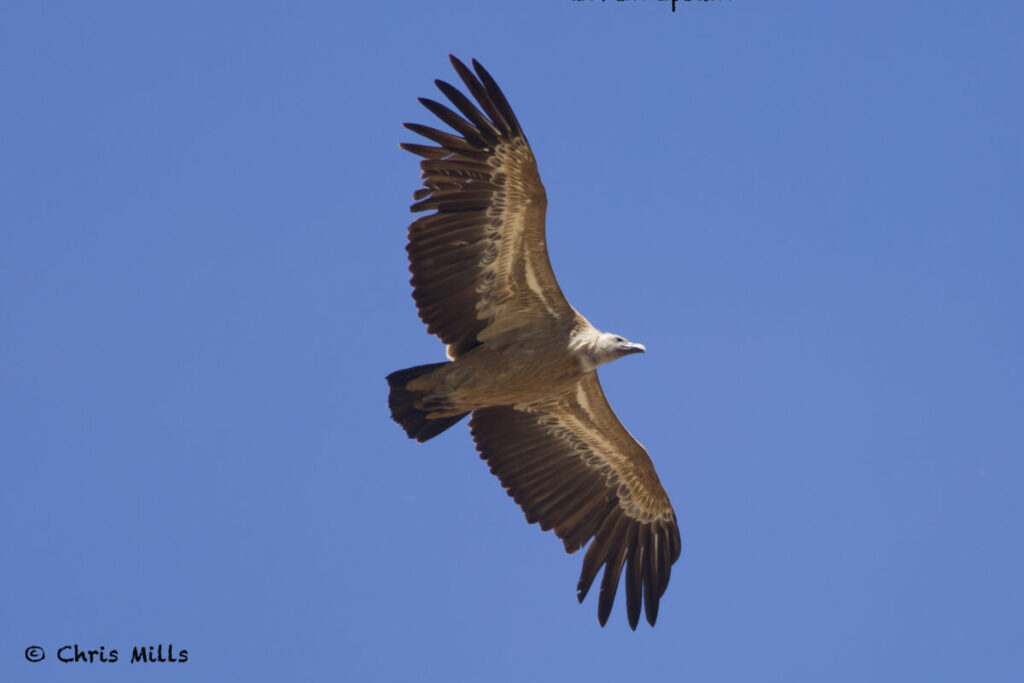
Griffon Vultures at the colony near Bolonia
Day 7 – 7th September
Our final day of birding and after two busy days, today was a more relaxed start! We dropped in at Cazalla watchpoint for a half hour before heading on to Tarifa for a boat trip out into the Straits. David decided as he had been out on the boat trip several times on previous trips to watch the migration from here, and recorded a migrant flock of c60 Greater Flamingo, 3 Black Storks, small group of White Stork, plus Booted, Short-toed Eagles and 2 Osprey.
We headed off to Tarifa and boarded the boat and headed out into The Straits, on the way out we crossed paths with several Cory’s Shearwaters, 1-2 at reasonable range giving nice views, otherwise there were a few Sandwich Terns and it was quiet until we eventually reached a nice pod of Short-finned Pilot Whales, they came right into the boat side giving lovely views. The boat then headed out further and we were soon watching a vey nice group of Bottle-nosed Dolphins, with around 20-30 present and again they came in close providing excellent views! Bird wise we didn’t add much more but further views of Cory’s Shearwater as we motored back.
Back in Tarifa we dropped off for coffee, before meeting back up with David at the Cazalla watchpoint, we had lunch here and there were continued nice views of the usual eagles, passing overhead. It was time for a last roll of the dice back at Agarobbo as the had been the more favoured location for Ruppell’s Vulture, which had eluded us so far. We headed there and just as we got out of the minibus on arrival Javi, one of the counters pointed skywards, shouting “Ruppell’s”!! Impeccable timing, and we watched Ruppell’s Vulture as it soared overhead and I managed to secure a few record shots with the camera.
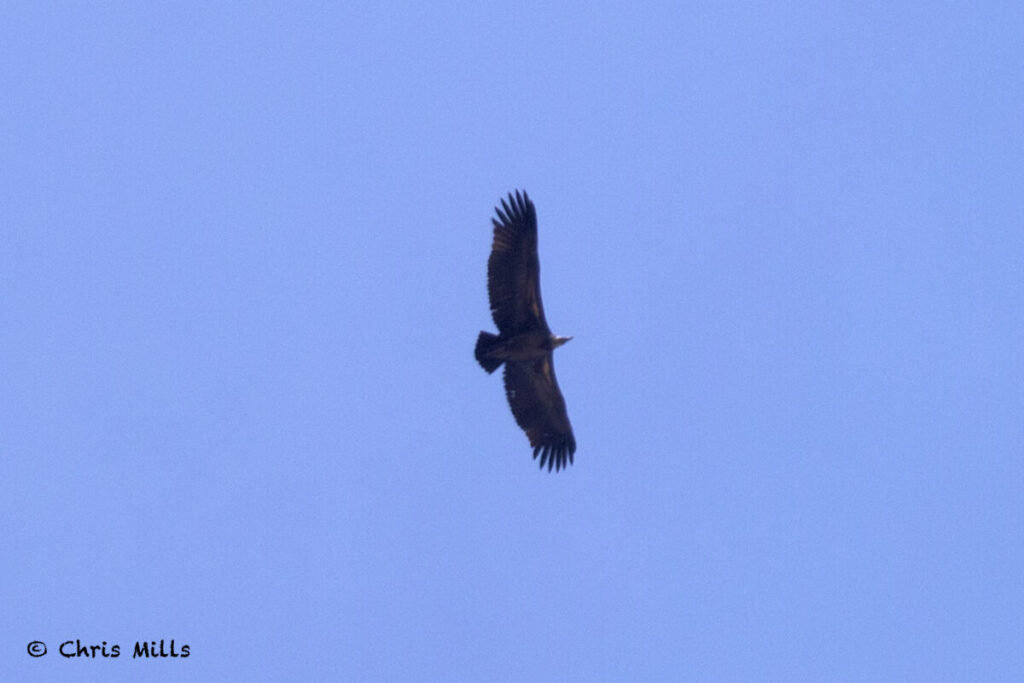
A ‘record shot’ of our Ruppell’s Vulture!
We headed back to the accommodation where there was a last chance for a cool dip in the pool followed by a final meal and log call with the weeks total a very respectable 154 species, mainly wildfowl species that we missed due to the very dry conditions this year.
Day 8 – September 8th
After breakfast we loaded up the minibus and dropped everyone to Gibraltar airport at 900am ready for their late morning flight back to the UK.
Accommodation
This tour was again hosted at the wonderful accommodation at Huerta Grande! Its geographical location is very close to the raptor watch-points. The migration overhead set in the beautiful woodland, with passerine migration outside the chalets are all great reasons for using this as our accommodation.
The accommodation consists of a lovely set of houses, rooms and timber lodges set in 7 hectares of Laurel forest and Cork Oak trees.
All rooms were en-suite or with separate private bathrooms plus each came with a small lounge area a kitchenette complete with a fridge, plus tea and coffee facilities. The rooms are clean and simple with modern comfort. There is a 20 metre pool where you can cool down and then look upwards and watch the migration above you!
Food
Each morning we were treated to cereal, muesli, juices, bread, toasts, jams, cheese, hams, tea & coffee! A real, filling & healthy breakfast.
Packed lunches were generally, a selection of filled rolls with cheese, Iberian meats, in French sticks, crisps and fruit.
Evening meals were taken at Huerta Grande on six evenings. They provided us with an excellent range of three course meal with a glass (or more!) of wine for 20 euros.
Thanks
I would like to say a special thanks to Katrin at Huerta Grande and Miguel Gonzalez Perea the local guide.
Also thanks to the group of clients who joined me, you were a great group and it was a pleasure to share so many great spectacles!
Final Overview & Systematic Bird List
This was another fantastic trip to Andalucia, our 9th year.
We recorded a total of 154 species.
Though species numbers are a minor part of the experience, the truly fantastic migration that passes through this region is nothing less than a truly spiritual experience for keen birdwatchers!
| 1 | Little Grebe |
| 2 | Cory’s Shearwater |
| 3 | Northern Gannet |
| 4 | Grey Heron |
| 5 | Night Heron |
| 6 | Little Bittern |
| 7 | Great White Egret |
| 8 | Little Egret |
| 9 | Cattle Egret |
| 10 | Black Stork |
| 11 | White Stork |
| 12 | Greater Flamingo |
| 13 | Mallard |
| 14 | Gadwall |
| 15 | Northern Shoveler |
| 16 | Tufted Duck |
| 17 | White-headed Duck |
| 18 | Egyptian Vulture |
| 19 | Ruppells Vulture |
| 20 | Griffon Vulture |
| 21 | Black Vulture |
| 22 | Bonelli’s Eagle |
| 23 | Booted Eagle |
| 24 | Short-toed Eagle |
| 25 | Osprey |
| 26 | European Honey-buzzard |
| 27 | Black Kite |
| 28 | Red kite |
| 29 | Marsh Harrier |
| 30 | Hen Harrier |
| 31 | Montagu’s Harrier |
| 32 | Black-shouldered Kite |
| 33 | Common Buzzard |
| 34 | Eurasian Sparrowhawk |
| 35 | Lesser Kestrel |
| 36 | Common Kestrel |
| 37 | Peregrine Falcon |
| 38 | Pheasant |
| 39 | Red-legged Partridge |
| 40 | Purple Swamphen |
| 41 | Moorhen |
| 42 | Common Coot |
| 43 | Crested Coot |
| 44 | Bald Ibis |
| 45 | Glossy Ibis |
| 46 | Eurasian Spoonbill |
| 47 | Oystercatcher |
| 48 | Black-winged Stilt |
| 49 | Avocet |
| 50 | Stone Curlew |
| 51 | Collared Pratincole |
| 52 | Great Ringed Plover |
| 53 | Little ringed Plover |
| 54 | Kentish Plover |
| 55 | Grey Plover |
| 56 | Knot |
| 57 | Sanderling |
| 58 | Little Stint |
| 59 | Temminck’s Stint |
| 60 | Curlew Sandpiper |
| 61 | Dunlin |
| 62 | Ruff |
| 63 | Black-tailed Godwit |
| 64 | Bar-tailed Godwit |
| 65 | Whimbrel |
| 66 | Eurasian Curlew |
| 67 | Common Redshank |
| 68 | Greenshank |
| 69 | Green Sandpiper |
| 70 | Common Sandpiper |
| 71 | Audouin’s Gull |
| 72 | Yellow-legged Gull |
| 73 | Lesser Black-backed Gull |
| 74 | Black-headed Gull |
| 75 | Slender-billed Gull |
| 76 | Caspian Tern |
| 77 | Sasndwich Tern |
| 78 | Common Woodpigeon |
| 79 | Collared Dove |
| 80 | European Turtle Dove |
| 81 | Rock Dove/Feral Pigeon |
| 82 | Monk Parakeet |
| 83 | Tawny Owl |
| 84 | Red-necked Nightjar |
| 85 | Alpine Swift |
| 86 | Common Swift |
| 87 | Pallid Swift |
| 88 | Little Swift |
| 89 | Common Kingfisher |
| 90 | European Bee-eater |
| 91 | European Roller |
| 92 | Hoopoe |
| 93 | Great Spotted Woodpecker |
| 94 | Sand Martin |
| 95 | Barn Swallow |
| 96 | Crag-Martin |
| 97 | House Martin |
| 98 | Red-rumped Swallow |
| 99 | Crested Lark |
| 100 | Calandra Lark |
| 101 | Lesser Short-toed Lark |
| 102 | Short-toed Lark |
| 103 | Wood Lark |
| 104 | Tree Pipit |
| 105 | Tawny Pipit |
| 106 | Blue-headed wagtail |
| 107 | Spotted Flycatcher |
| 108 | Pied Flycatcher |
| 109 | Black Redstart |
| 110 | Common Redstart |
| 111 | Whinchat |
| 112 | Common Stonechat |
| 113 | Black Wheatear |
| 114 | Black-eared Wheatear |
| 115 | Northern Wheatear |
| 116 | Wren |
| 117 | Robin |
| 118 | Blackbird |
| 119 | Zitting Cisticola |
| 120 | Cetti’s Warbler |
| 121 | Reed-Warbler |
| 122 | Melodious Warbler |
| 123 | Willow Warbler |
| 124 | Common Chiffchaff |
| 125 | Iberian Chiffchaff |
| 126 | Blackcap |
| 127 | Garden Warbler |
| 128 | Dartford Warbler |
| 129 | Subalpine Warbler |
| 130 | Sardinian Warbler |
| 131 | Firecrest |
| 132 | Crested Tit |
| 133 | Great Tit |
| 134 | Eurasian Blue Tit |
| 135 | European Nuthatch |
| 136 | Short-toed Treecreeper |
| 137 | Iberian Grey Shrike |
| 138 | Woodchat Shrike |
| 139 | Eurasian Jay |
| 140 | Magpie |
| 141 | Eurasian Jackdaw |
| 142 | Common Raven |
| 143 | Spotless Starling |
| 144 | House Sparrow |
| 145 | Chaffinch |
| 146 | Greenfinch |
| 147 | Hawfinch |
| 148 | Goldfinch |
| 149 | Linnet |
| 150 | Red Adavat |
| 151 | Cirl Bunting |
| 152 | Common Waxbill |
| 153 | Rock Bunting |
| 154 | Corn Bunting |
Amazing Migrants Tour 2023
Next tour 2023 Andalucia Tour dates 2nd-9th September
If you are interested in joining the trip or visiting Andalucia, please feel free to drop me an email at chrismills@norfolkbirding.com.
If you are interested in joining contact us as soon as possible as this is a very popular trip.
+44 7876 357677
